1. Cars
On Jan. 9, 1965, a landslide tumbled down the slope of Johnson Peak in British Columbia and crashed through the Nicolum Valley, just east of the district of Hope. Forty-seven million cubic metres of boulders, dirt, trees and brush all compressed in an instant and roared into a three-kilometre-wide corridor, erasing a lake, a car, two trucks, four people and a chunk of the Crowsnest Highway.
My friend Vivian Seegers and I drove along this highway in August 1999. We were on summer leave from the Vancouver School of Theology, studying to become Anglican priests. I am an Argentine Canadian of European descent, while Vivian, of Dene and Cree ancestry, was born in the northernmost corner of Saskatchewan. We didn’t know it then, but Vivian would go on to become the first Indigenous woman ordained in her diocese. School and church weighed heavily on us, but on the road trip, we could be free for a while.
You may unsubscribe from any of our newsletters at any time.
We stopped and gasped at the site of the slide, but Vivian, always in a hurry, smiled her big wide grin, slapped her hands and hustled us back into the car. For the whole eight-hour drive to Nelson, B.C., Vivian was on the lookout for deer. One night years before, while Vivian roared across the Rockies, she struck one. The wreck nearly scared her off cars for good, but her brother convinced her to get back on the horse.
After dropping off me and my bicycle just outside of Nelson, Vivian whirred away to Alberta to visit her family. “You have to have a car,” she always said. “For when you need to escape.”
Vivian’s need to escape started in 1964 when she was just four years old. Her father had drowned a year earlier in a lake near their hometown of Uranium City in northern Saskatchewan. Her stepfather, who suffered from mental health issues, constantly terrorized her mother. Her father, stepfather and mother were residential school survivors.
“Jeannie, my sister, would take me to our old car,” Vivian wrote to me in 2011. “She taught me to be really quiet so [our stepfather] wouldn’t find us….He tried to convince me there were bogeymen out there, but he was scarier than any bogeyman.” In that heart-breaking letter, Vivian spoke of the terrible things she had seen as a little girl. Violence had stalked her and hollowed out her mother.
When she was 14, Vivian finally escaped northern Saskatchewan, moving first to Edmonton before landing on the streets of Vancouver. Like so many other traumatized young people, Vivian soon became trapped in cycles of violence and addiction. One day, Rev. Monty Bingham, an Anglican priest who worked downtown, saw Vivian and told her she mattered. Vivian soon got sober, raised two children (she later adopted a third), studied anthropology at university and eventually got a vehicle, her escape pod to a parallel universe. In 1999, she made her way to seminary, determined that God was calling her to the priesthood. That is where we met.
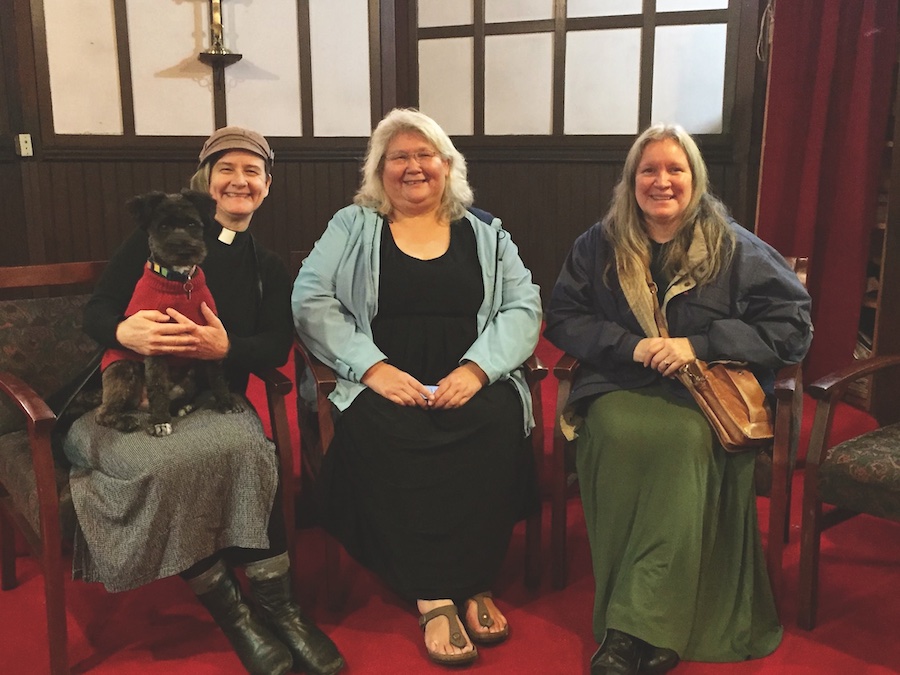
I was ordained in 2004, a year out of seminary. But Vivian would have to wait 14 years for her ordination. She didn’t speak the “right” church language or follow the sanctioned process for ordination, but she still kept busy. Vivian founded the Urban Aboriginal Ministry — a ministry of St. Mary Magdalene Anglican Church in Vancouver — and set about healing and caring for others. Her car became her office.
In October 2020, Vivian told me she planned to drive from Vancouver to Toronto with her son, Steven. “You’re nuts,” I told her. But Clio, her daughter, was due with her first baby, and 4,000 kilometres, a global pandemic and a Canadian winter couldn’t stop Vivian from visiting. The duo drove straight across the country, stayed for two weeks, welcomed baby Emma, then drove back just as the snow started to fall. The second wave of the pandemic reared up as they made their way home, and the provinces closed behind their car, doors slamming one by one.
2. Retreat
By late March 2021, 75-year-olds were eligible for the COVID-19 vaccine, along with Indigenous people aged 55 and up. Vivian was about to turn 62. I monitored the government vaccination websites, ready to be the know-it-all white lady and nag Vivian to get vaccinated. But she wasn’t so sure. What had the Canadian government ever done but drive Indigenous people into the earth or ignore them?
Vivian was exhausted. Many people around her were dying or struggling with mental health issues in isolation. She even knew some who were drinking hand sanitizer, a new, cheap and readily available source of alcohol. Drum circles were cancelled and so were feasts. Vivian ran semi-clandestine memorial services out in the mountains and moved people around in her car, including into her apartment. Wherever she saw a need, she stepped up to help — even when that meant risking her own health and safety.
“Let’s just get away for a while,” she told me. “My heart is hurting.” I was glad. We went to our island hideaway — Rivendell Retreat Centre on Bowen Island — for a week of trees, mist and soft things waiting for spring. We slept, read and prayed. I felted five hats out of unspun wool; she chose the grey one. For the first time in a while, she looked happy and peaceful. We warmed ourselves by the library fireplace. She stoked the flames high and kept them burning. And we sat together — masked and not too close.
Vivian told me of the time she became a Sun Dancer. Several First Nations in the Prairies hold Sun Dances annually as a celebration of renewal. Vivian was given the pipe and carried a bundle filled with sacred medicine. “I danced for three days,” she told me. “But on the fourth day, I couldn’t get up.”
The Elder told her to sing, she recounted, and she did. Her hunger and exhaustion vanished.
Vivian stirred the fire and put on another crisp log. Looking back at that precious week with Vivian makes me acutely aware of our shared history. My ancestral history is one of arrival, settlement, ignorance and violence toward Indigenous people; the government and church tried to take or destroy hers. But in that moment, our friendship was enough. The fire died down and through our masks we whispered, “Good night.”
The morning after our warm fire, we went to a thrift shop down the road. The volunteer clerks followed Vivian around the store with their eyes. They seemed to be breathing suspicion, but Vivian didn’t notice or care. I told the women she was a priest who worked with the homeless. Their faces changed immediately.
Afterwards, we slipped down to the end of a dirt road. Vivian was taking me to see Opa, or Grandfather. Opa was a 1,000-year-old Douglas fir on Bowen Island. He was as thick as an elephant, and his branches sprouted far above where other trees ended. At some point, someone had tried to cut him down; slits and big chunks scarred the trunk at human height. Centuries of lightning streaked him black too. But there he was, still standing.
All around us massive stumps melted into the forest floor — the remains of trees chopped down and taken away. Yet, other parts of the forest were thick again. It rained gently. I noticed that Vivian was crying, her hand on the ancient Opa.
I didn’t say anything, but I realized that we were standing on a graveyard.
“Why do you think they called him Opa?” I asked as we made our way out of the forest.
“Patriarchy,” she laughed.
3. Recovery
Vivian was finally ordained in 2018 at age 58 — the first Indigenous woman made priest in the Diocese of New Westminster, B.C. In the decade and a half between graduation and ordination, Vivian was invisible to most church leaders and unacceptable to some. She was often angry and occasionally loud. On some days, she was also bitter and afraid. Vivian could not — and would not — turn herself into the so-called “good Indian.” As a result, the church didn’t have its eyes on her.
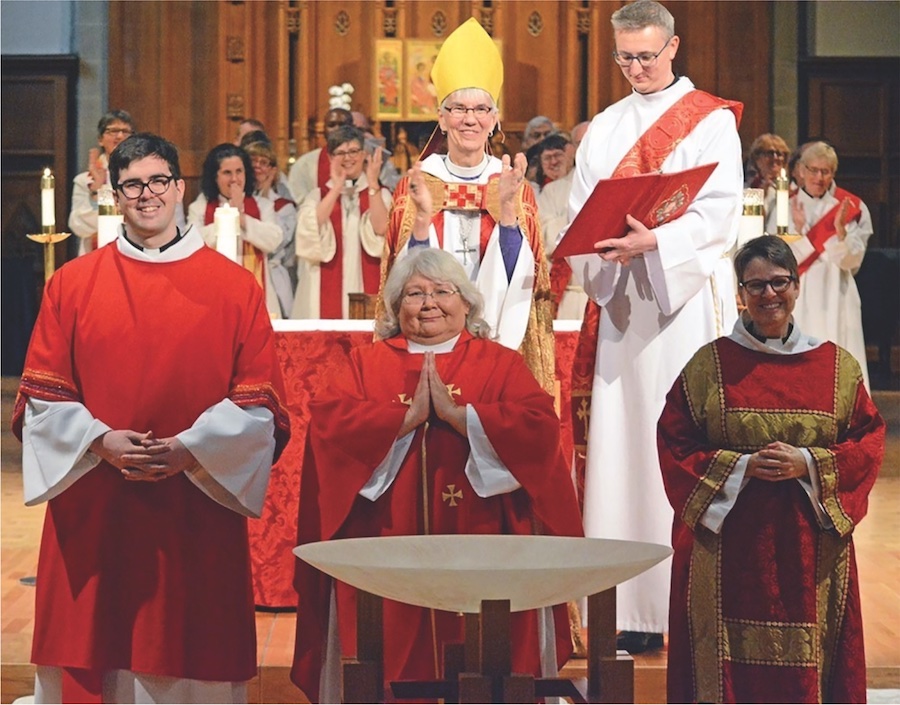
At Vivian’s ordination ceremony, she held up her pipe. Bishop Melissa Skelton blessed both pipe and Vivian. Drummers attended the ceremony too, and sang and pounded their drums. That night, the church filled with the smoke of burning sage. Sun Dancer Sam George and the Elders from the Tsleil-Waututh First Nation — the descendants of the original peoples of the land — welcomed us all.
Over our more than 20-year-long friendship, Vivian shared things with me I will never write or speak to anyone about. She carried, as do many Indigenous people, the inheritance of attempted obliteration. So much was destroyed, yet much was still there. Thirty years free from alcohol, nothing mattered more to her than the healing and recovery of her people — and her peoples’ way of being in this world. She wrote and spoke often about the broken little girl inside of her, but Vivian lived as medicine. She drew her whole family into her justice circle. In the end, all of us were her relations.
Vivian gathered the threads of the way her ancestors had lived and healed, and firmly believed this too was the way of Jesus. She was a burr under the saddle of a church concerned with how to hold up its buildings and dwindling congregations. Vivian acted as if the church really was about feeding the hungry, welcoming the stranger, sheltering the broken. That’s what church meant to Vivian, and she lived without consideration that it could be any other way.
She knew, of course, all the harm that had been done in the name of Jesus. She knew it deep in her heart. Once, when we were in seminary together, I asked her why she even bothered with Christianity. “White people do not own Jesus,” she responded through clenched teeth. I was so sorry. I had much to learn. Vivian was right. If we had any hope of standing with this poor carpenter from Nazareth, we would have to claw through centuries of harmful thinking. We would have to unhitch our faith from the horses of power, domination, riches and violence. The only hope for the church was to actually embrace those cast aside by the world — like we were supposed to do all along.
4. Thirst
In 2004, after Vivian and I had finished seminary, I was ordained a deacon and would soon become a priest. Our school organized a group for me to lead to Guatemala, a place where I had lived and worked for years. Vivian came too, but it was a difficult trip.
Almost half of Guatemala’s population is Indigenous — Maya survivors of first the Spanish conquest and then, more recently, the Guatemalan Civil War, which lasted from 1960 to 1996 and killed more than 200,000 people. We visited an impoverished city settlement, El Mezquital. After getting out of our van, we sat on concrete blocks in the dusty streets with women from the community. The hardest thing, they told us, was the lack of water. Shacks crowded up and down the hills, made of tin, plastic and cardboard. Clothing draped over fragile walls just to air out, since there was no way to wash them. The residents here were always thirsty.
Back in the van, we passed by the freshly trimmed green grass of the Mayan Golf Club, and then a field of tomatoes. Each thriving tomato plant had its own little sprinkler. To me this was no surprise, but I watched from behind Vivian’s seat as her shoulders bent. She couldn’t contain her tears. The rest of us fell silent. She was our lead mourner, crying for us all.
I thought again of Vivian’s intense empathy 17 years later at the height of the pandemic. In early April 2021, I received my first vaccination. Vivian booked vaccine appointments for her, her stepfather and her brother. But a few days before the appointment, a young friend of ours got sick. Vivian drove him to the hospital and later tested positive herself. It was a terrifying moment, like an accident in slow motion that you are helpless to prevent. She called me that day, once, and then, after her phone died, on her computer.
“I can’t breathe,” she rasped. I lived five blocks away from her and called 911. The ambulance arrived and took her to Vancouver General Hospital. Luckily, they brought her phone along. I rushed to the hospital with a phone charger, a rosary and a bundle of sage, but staff wouldn’t let me in. “I’ve had my shot! I’m a priest!” Nope. So, I left her things.
The next day, Vivian began to post on Facebook Live. She wanted us all there with her as friends and witnesses. We saw her breathing diminish. First came the tubes in her nostrils, the next day a mask and the day after an even bigger mask. Finally, she announced that doctors had decided to place her in a medically induced coma. She gasped as the nurses fussed around her. I couldn’t watch anymore.
In my parish courtyard, under the exuberant pink explosion of two 100-year-old cherry trees named Heart and Soul, I spoke on the phone with our bishop, ashamed to be discussing the possibility of Vivian’s funeral. Three days later, Vivian woke from her coma and tasked us to help her complete her errands while she was in the hospital.
We gathered many people whose lives Vivian had touched over the past 30-odd years. We met on Zoom every night — people I hadn’t seen since seminary and people I didn’t even know. There was drumming, smudging, reading and prayers. Her daughters came to Vancouver from Toronto and Calgary. Her niece, who was like another daughter to her, came from Penticton, B.C., with her four little boys. Her nephew was there too. We weren’t allowed to visit her, but we wanted to stay close.
I turned from everything else in my life and focused my attention to her. Sometimes she called me just to listen to my voice. And so, I prayed out loud with her. I sang to her with my wife. We read. I always talked too much and didn’t know how to fill the gaps.
“Pray for me in the dark time till morning please,” she texted from the hospital. “I am thirsty.”
5. Evening Prayer
The weeks dragged on as we prayed for Vivian to get better. Then a text: “My oxygen is dropping.” It was a Friday, and I was helping run our emergency food cupboard at St. Barnabas in New Westminster, B.C. Vivian then called me, and I dropped my bags and ran outside to be under the trees. She could barely speak but nevertheless got out a few words. “Go,” she said. “Look after your people.”
She called me again, but I missed it. She called me a third time. Facetime. I saw her silver hair and her kind, generous face. It was evening. I didn’t know what to say. So I grabbed my books and asked her if she wanted to do evening prayer together. She nodded.
More on Broadview:
- Change the Bill reimagines Canadian bank notes with Indigenous women
- Why more Indigenous people are leaving Christianity
- Coast Salish sweat-lodge keeper welcomes all to share in healing
I ignored the assigned readings and dug up her favourite: Psalm 139. I know you. I created you. There is nowhere you can go that is apart from my love. We finished. Her phone was facing up, and all I could see was the ceiling of her hospital room. I laid down on the floor, and I faced my phone up. We stayed online together for a while. At last, I sat up. “It’s beautiful outside,” I said. The late May sun was still shining. She raised her phone to show me the scene outside her window. Below the hospital was a sea of green trees.
“I wonder which way you are facing,” I said.
She managed to get a few words out. “South … St. Mary Magdalene.”
“Keeping your eye on the church?” I laughed. Two blocks south of the hospital was her little parish, a place where so many found love through her.
By Sunday, Vivian was back in the ICU.
6. Farewell
On the afternoon of June 2, 2021, my friend and colleague, the Rev. Vivian Margaret Seegers, Cree-Dene matriarch, Sun Dancer and Anglican priest, died of complications from COVID-19. After nearly seven weeks on a ventilator, her lungs had been irreparably ravaged. Five women — her daughters, niece and close friends — surrounded her dying in a circle of song and prayer. We held her warm hands, and we held each other. Then we went out together to St. Mary Magdalene Church, where her son, Steven, led the other mourners with his heavy drum. With Vivian went a mountainside of beauty, suffering, knowing and resistance. All that gone. All that to be gathered up and carried forward by those who loved her.
7. Oma
In late 2021, I returned alone to our island getaway and to her favourite little cabin down the road. Vivian loved to sleep here so she could see the trees, and loved waking up cold and getting busy to light the fire.
A young buck visited me with gentle eyes and precious fuzzy antlers. He nuzzled the huckleberry bushes coming to flower. For a while, we stared in wonder at one another. Tell Steven I love him, the buck told me with his eyes. The shadow of an old owl swooped silently through the trees. The mice hid. The small birds carried on. The smallest Douglas fir seedling I’ve ever seen sat bravely on a stump.
On a path I’ve taken many times, I found her. Oma. Grandmother. I’d never noticed her before. Another big old tree, reaching high into the heavens above the sea of smaller trees. She had seen so many things come and go. The First People, and then the big ships and the saws. There’s a golf course, perfectly manicured in her shadow, but she doesn’t mind. She will share her shade with anyone who comes by, share her roots, tell the little ones where to go deep down for water. She kindly takes my tears.
***
Rev. Emilie Teresa Smith is an Argentine-born Anglican priest and theologian in Vancouver.
This feature was funded through a generous gift from Revs. John and Lillian Perigoe to support Broadview’s coverage of feminism and theology.
This story first appeared in Broadview’s July/August 2023 issue with the title, “Sun, Dancer, Matriarch, Priest.”

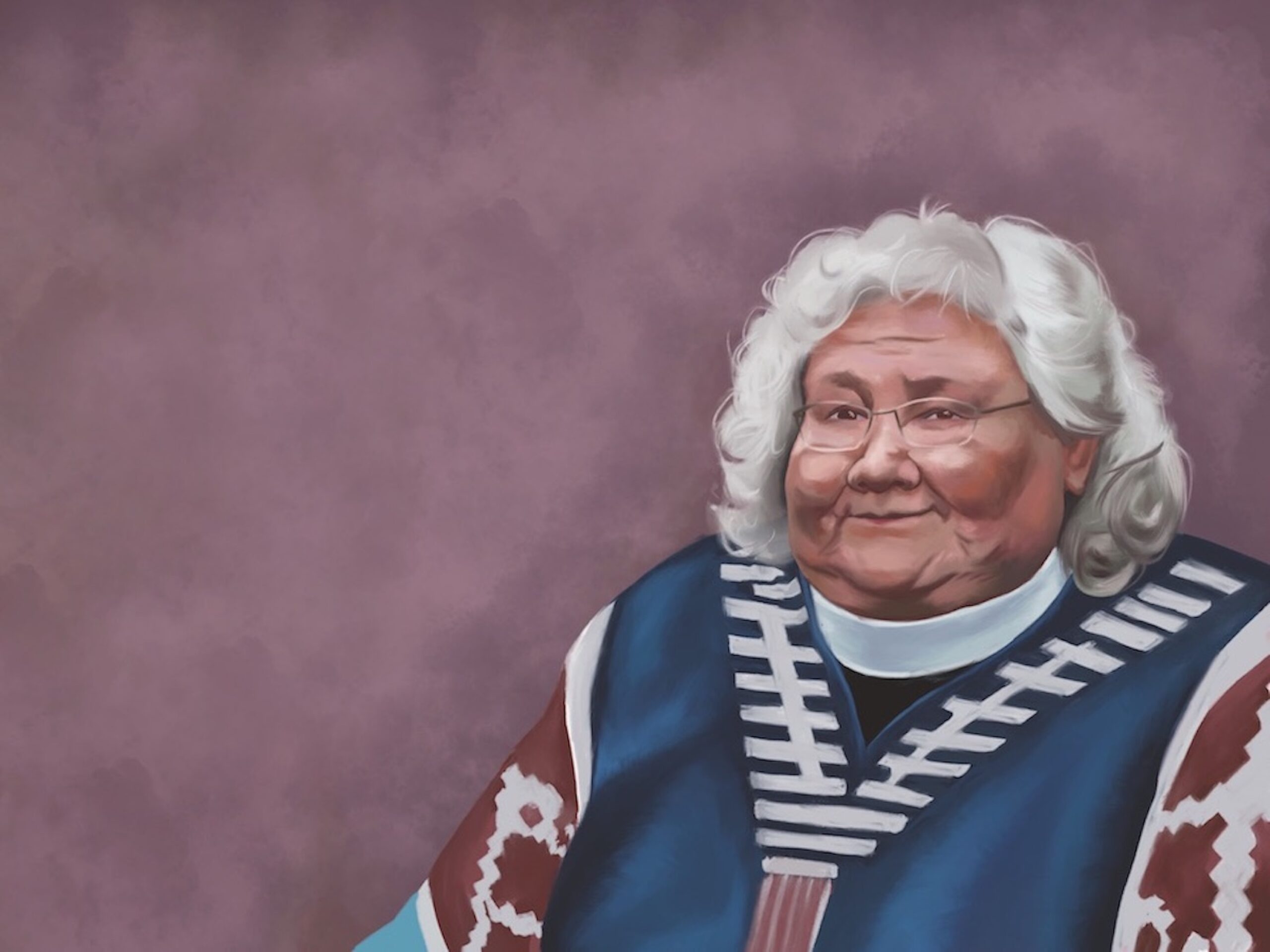


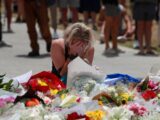
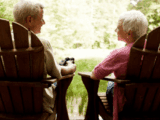
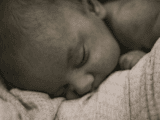



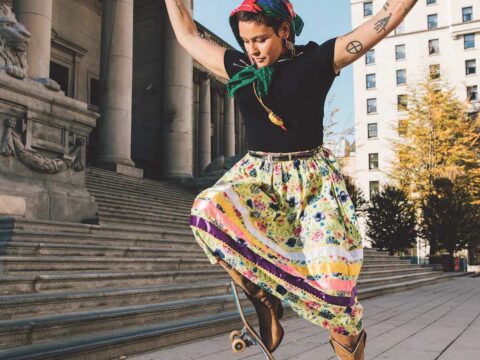
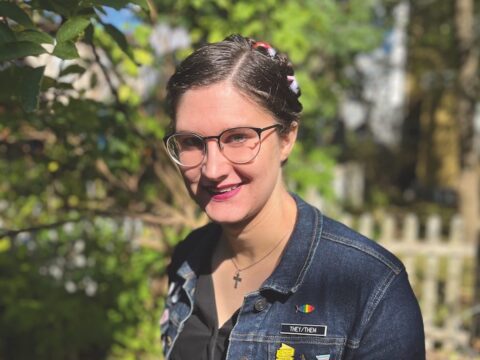
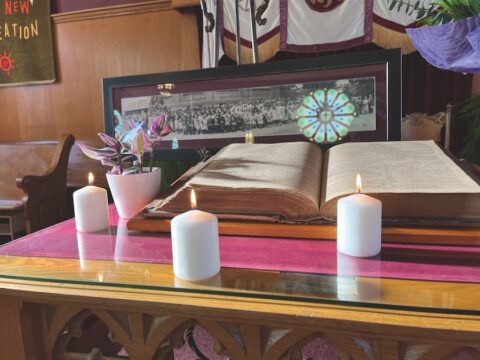
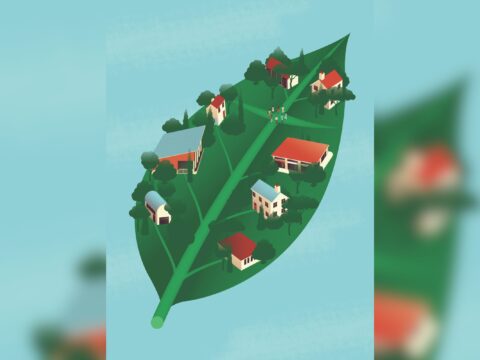
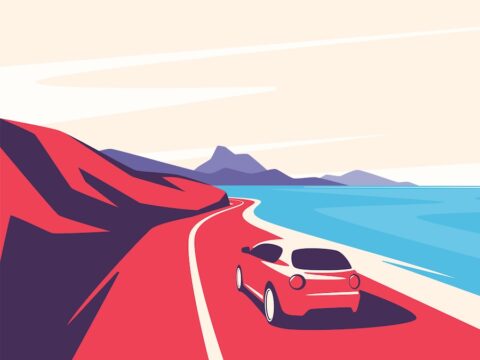
Glad that God use her in this life,may those that were influenced by her be blessed.knew her in northern Saskatchewan.She is now dancing with the angels.
Women keep the home/hearth/soul fires burning. Vivian achieved this throughout her blessed life, until the breath was taken away from her. Wild fire smoke is taking the breath from us. As I paddled on the shining waters of the bay, I was able to breathe and fill my lungs with air as the other paddlers did too. We surged through the water with our united power and united breath of life. We need to “pay it forward” to continue Vivian’s legacy and the instruction to live the truth, the way and the life. L’chaim. To life!
I loved the two years that I spent at VST and Vivian and Emilie were a part of that time. Both of them have been and still are a blessing to so many people.